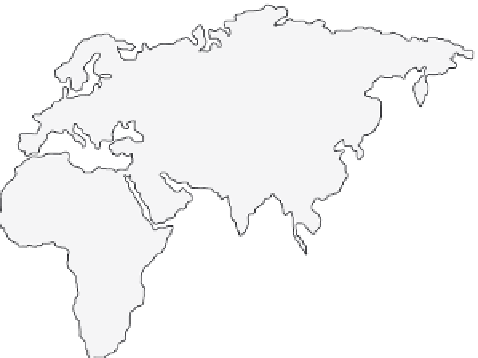Geoscience Reference
In-Depth Information
10
Continental shelf environments
Piers Larcombe
10.1
dominantly calcareous in nature, and shelf
sediment dynamics are crucial in influencing
the nature and fate of shelf sediments. The
nature and morphology of continental shelves
are controlled by: (i) the hydraulic regime, and
hence sediment transport, (ii) sediment supply
and (iii) relative sea-level (Johnson & Baldwin
1996). Other factors, particularly important for
carbonate shelves, are climate, biological inter-
actions with the sediments, seawater chemistry
and sediment composition. It is increasingly
being acknowledged in management regimes
that the surface sedimentary systems are vital to
marine ecosystems.
INTRODUCTION
This chapter addresses the environmental sedi-
mentology of continental shelves. 'Continental
shelf' is taken to be the sea floor shallower
than about 200 m adjacent to continental land-
masses, with the outer margin marked by the
continental slope (e.g. Whitten & Brooks 1972)
(Fig. 10.1). In the long-term, continental shelves
receive river sediments, with supply to the
shelf modulated by catchment (Milliman 2001;
Walling & Fang 2003) and estuarine processes
(Dyer 1966, 2000). Some shelves contain major
regions of
in situ
sediment production, pre-
12
9
13
11
10
6
5
1
2
8
7
3
4
Fig. 10.1
Distribution of modern continental shelves (dark grey). Continental shelves noted in the text are: 1, Great Barrier Reef,
Australia; 2, Western New Caledonia; 3, Lacepede shelf, South Australia; 4, South Otago, New Zealand; 5, Amazon; 6, Belize; 7, south-
east Africa; 8, southern Namibia; 9, Oregon-Washington; 10, Texas-Louisiana shelf; 11, Mid-Atlantic Bight; 12, UK and western
European shelf; 13, north-western Mediterranean. (Modified after Johnson & Baldwin, 1996.)













































































